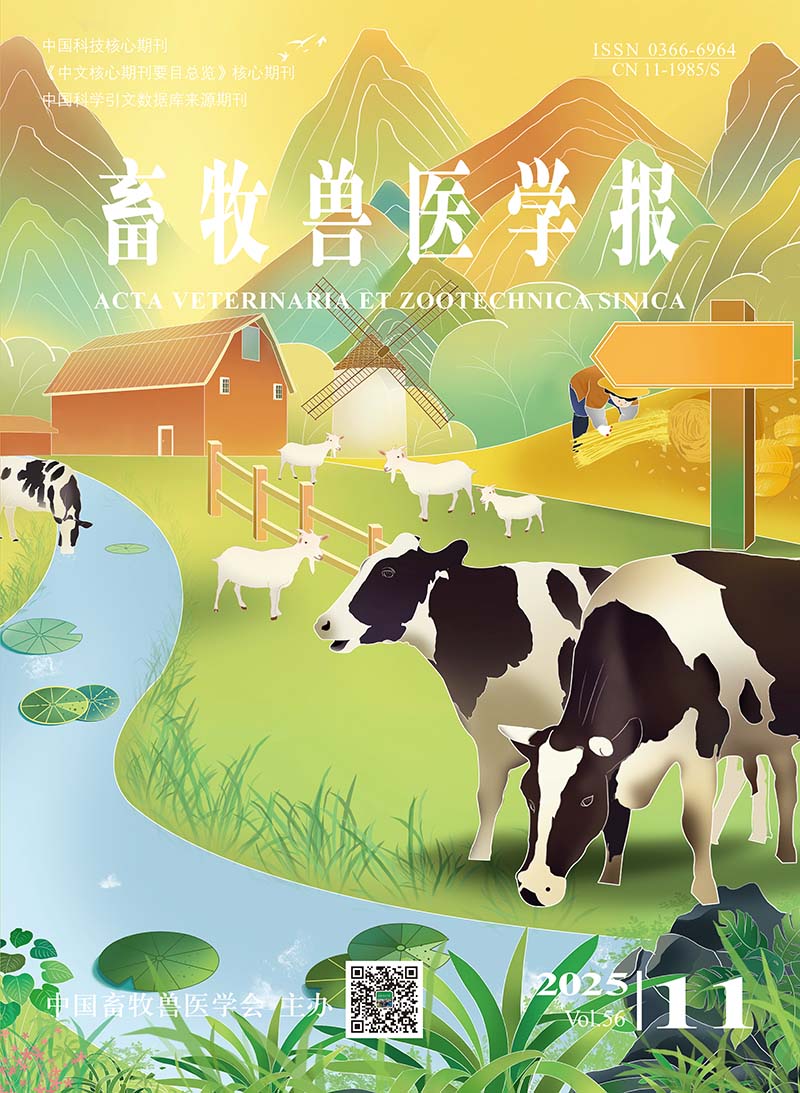-
Effects of PGF2α on Reproductive Hormones and Related Cytokines during Luteal Phase in Ewes
- LI Yu, DUAN Chunhui, SONG Zhipan, YUE Sicong, WANG Yuan, ZHANG Yingjie, LIU Yueqin
-
2022, 53(6):
1807-1818.
doi:10.11843/j.issn.0366-6964.2022.06.014
-
 Abstract
(
338 )
Abstract
(
338 )
 HTML( )
HTML( )
 PDF (1505KB)
(
659
)
PDF (1505KB)
(
659
)
-
References |
Related Articles |
Metrics
The aim of this study was to investigate the effects of prostaglandin F2α (PGF2α) injection at different phases of luteal on reproductive hormones and related cytokines in growing ewes. A total of 60 healthy ewes in good condition with similiar weight and normal estrous cycle were used in this study. Forty eight ewes with normal estrus were randomly divided into 6 groups after synchronization of estrus cycle with "MAP +PMSG" method. The day of oestrus was recorded as day 0. Ewes in the experiment groups of early-, mid-, and late-luteal phase were injected with 1 mL PGF2α (0.1 mg) on day 6 (early-luteal phase), 11 (mid-luteal phase) and 16 (late-luteal phase) of luteal phase, respectively. Ewes in the control groups of different luteal phases were injected with 1 mL normal saline on day 6, 11 and 16 of luteal phase, respectively. Blood was collected at 0.5, 1, 2 and 3 hours after each injection for the determination of blood indexes. The results showed as follows: There were no significant differences in levels of FSH, LH, PRL, P4, E2, TNF-α, IL-1β, IL-6 and IFN-β between experimental groups and control groups at 0.5, 1, 2, 3 h after injection (P > 0.05). Injection of PGF2α at different phases of luteal had no significant effect on serum FSH, LH, PRL, IL-1β and IFN-β levels at 0.5, 1, 2 and 3 h (P > 0.05). At 3 h after injection, P4 level was significantly lower, E2 and IL-6 levels were significantly higher in the early-luteal experiment group than that in control group (P < 0.05). The level of TNF-α in the early-luteal experiment group was significantly higher than that in control group at 2 and 3 h after injection (P < 0.05), and the level of P4 in the mid-luteal experiment group was significantly lower than that in the control group at 1 h after injection (P < 0.05). After injection of PGF2α in the early-luteal phase, the overall levels of FSH, E2, TNF-α and IL-6 in the early-luteal experiment group were significantly higher than those in control group within 3 h (P < 0.05), and the overall level of P4 was significantly lower than that in control group (P < 0.05), there were no significant effects on LH, PRL, IL-1β and IFN-β (P>0.05). After injection of PGF2α in the mid-luteal phase, the overall level of E2 in the mid-luteal experiment group was significantly higher than that in control group within 3 h(P < 0.05), and P4 was significantly lower than that in control group (P < 0.05), there were no significant effects on FSH, LH, PRL, TNF-α, IL-1β, IL-6 and IFN-β (P>0.05). Injection of PGF2α at the late-luteal had no significant effect on reproductive hormones and related cytokines (P>0.05). In conclusion, there are stage differences of PGF2α in dissolving corpus luteum. The short-term response of ewes to PGF2α was stronger in early-luteal phase than in mid- and late-luteal phases. The ovaries could respond to PGF2α in early-luteal phase to create a better environment for follicular development.






